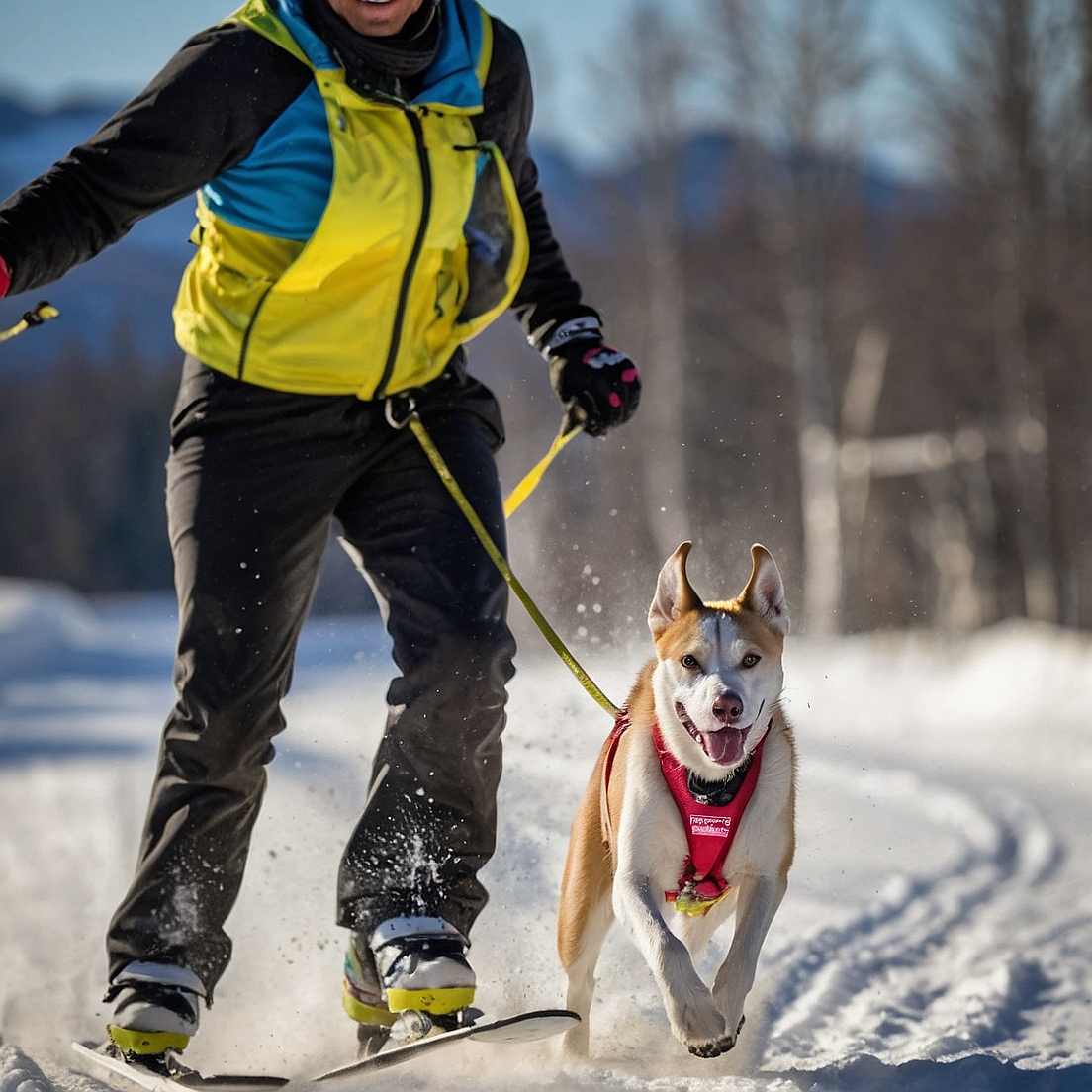Skijoring is a thrilling winter sport that combines cross-country skiing with dog sledding, where a dog pulls a skier through a snowy landscape. This exciting activity requires a strong bond between the dog and the skier, as well as proper training to ensure a safe and enjoyable experience for both. Training a dog for skijoring involves a gradual and step-by-step approach, starting from basic obedience commands to building endurance and trust.
Introduction to Skijoring
Before diving into the training process, it’s essential to understand the basics of skijoring. Skijoring is a Norwegian word that means “ski driving,” where a dog pulls a skier, usually on flat or gently sloping terrain. The dog wears a harness, which is attached to a rope or line that the skier holds onto. The skier provides the propulsion, while the dog provides the traction, making it a fantastic workout for both participants. Skijoring can be done recreationally or competitively, with various distances and formats.
Choosing the Right Breed
When selecting a dog for skijoring, it’s crucial to choose a breed that is naturally inclined to pulling and has the physical attributes to handle the demands of the sport. Breeds such as Siberian Huskies, Alaskan Malamutes, and Samoyeds are popular choices due to their strength, endurance, and love for pulling. However, any dog that enjoys pulling and is willing to learn can be trained for skijoring. Factors to consider when selecting a breed include the dog’s size, weight, and energy level, as well as its temperament and trainability.
Basic Obedience Training
Before starting skijoring-specific training, it’s essential to establish basic obedience commands with your dog. This includes commands such as “sit,” “stay,” “come,” and “walk” on a loose leash. A well-behaved dog that responds promptly to commands will be more receptive to skijoring training. Start with short training sessions, using positive reinforcement techniques such as treats, praise, and affection. Consistency and patience are key when teaching your dog basic obedience.
Building Endurance and Strength
Skijoring requires a significant amount of endurance and strength from the dog. To build your dog’s endurance, start by introducing short periods of exercise, such as short walks or jogs, and gradually increase the duration and intensity. You can also incorporate strength training exercises, such as pulling a sled or cart, to build your dog’s muscular endurance. Here are some tips to build your dog’s endurance and strength:
- Start with short training sessions (10-15 minutes) and gradually increase the duration
- Incorporate strength training exercises, such as pulling a sled or cart, 2-3 times a week
- Use positive reinforcement techniques, such as treats and praise, to motivate your dog
- Gradually increase the intensity and difficulty of the training sessions
- Provide regular breaks and rest periods to avoid exhaustion and injury
Introducing the Harness and Line
Once your dog has built sufficient endurance and strength, it’s time to introduce the harness and line. Start by letting your dog wear the harness around the house or during short walks, allowing them to become accustomed to the feeling of wearing the gear. Next, introduce the line, starting with short sessions where you hold the line and your dog becomes familiar with the feeling of being pulled. Gradually increase the duration and intensity of the sessions, always using positive reinforcement techniques.
Skijoring-Specific Training
With the basics in place, it’s time to start skijoring-specific training. Begin by finding a flat, open area with minimal obstacles, such as a frozen lake or a snowy field. Start by skiing behind your dog, holding the line and giving gentle commands to guide them. As your dog becomes more comfortable and confident, you can gradually increase the speed and distance. Remember to always use positive reinforcement techniques and provide regular breaks to avoid exhaustion and injury.
Tips and Safety Considerations
Skijoring can be a safe and enjoyable activity for both dogs and skiers, but it’s essential to take necessary safety precautions. Always wear proper gear, including a helmet and protective clothing, and ensure your dog is wearing a properly fitted harness. Be aware of your surroundings, including other skiers, snowmobiles, and wildlife, and always keep the line taut to maintain control. Additionally, be mindful of the weather conditions and your dog’s physical limitations, taking regular breaks to avoid exhaustion and injury.
Conclusion
Training a dog for skijoring requires patience, consistency, and positive reinforcement. By following these steps and tips, you can help your dog become a confident and capable skijoring partner. Remember to always prioritize your dog’s safety and well-being, taking regular breaks and providing proper care and attention. With time and practice, you and your dog can enjoy the thrill of skijoring, exploring the beautiful winter landscapes and strengthening your bond in the process.
